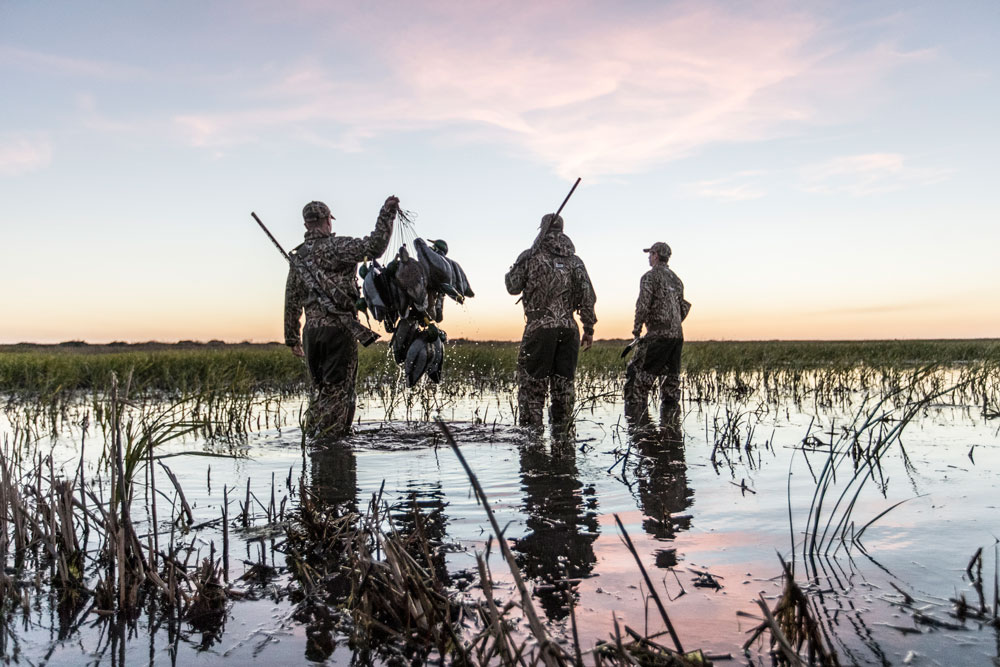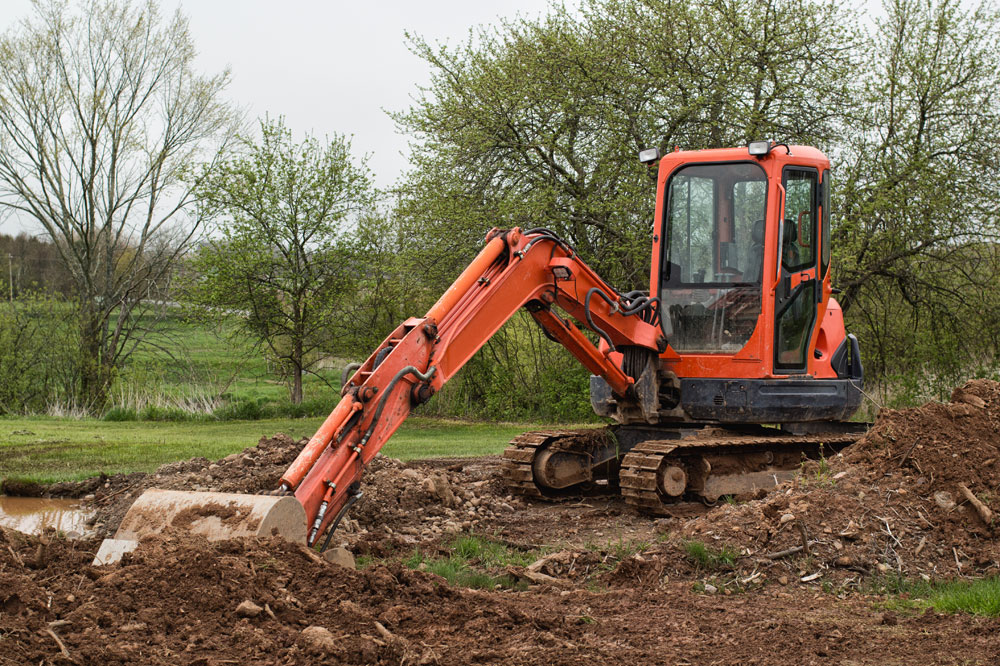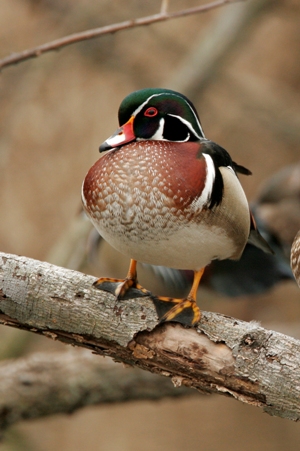Proper Management Keeps Waterfowl Numbers Growing Year after Year
Brad Fitzpatrick | Originally published in GameKeepers: Farming for Wildlife Magazine. To subscribe, click here.

Perhaps you are an avid waterfowler who manages your property first and foremost to attract ducks and geese. Or maybe you are a deer hunter with a bottomland lease that floods in winter and you’d like to turn the area into a two-season property, a place to pursue big bucks in the fall and ducks in the winter. Either way, it makes sense to manage your property for waterfowl. Even if you don’t hunt ducks odds are that someone in your hunting area does, and leased ground that houses bucks and ducks is certainly worth more money for the land manager.
Duck management is not difficult and it’s rewarding to draw migratory birds to your property. You increase your value as a wildlife manager, make the most money on your lease holdings and have the opportunity to enjoy some great waterfowling action in the process. But managing property to attract passing waterfowl is a very different proposition than keeping that big buck in your core area. By following these seven steps you will be well on your way to improving your property’s value and bringing in the birds.
Choose an Isolated Area
There are certain key criteria that waterfowl look for in a feeding pond. First and foremost for the ducks is safety, and birds will avoid a pond or slough that is too close to roads, buildings, people and pets. Select and area that is secluded and quiet and you will certainly draw in more ducks, particularly if the area is near a flyway. Once you establish a wetland area or pond try and avoid spending excessive time in the area and keep vehicles and farm implements away from the pond. Isolated areas away from dense cover and surrounded by open ground make it more difficult for predators to kill ducks, which means that you are likely to keep more birds on the water throughout the season.
Dig Shallow Ponds

A fishing pond and a duck pond are two entirely different things. Most common species of ducks like mallards actually prefer shallower ponds, so there’s no need to dig a dedicated duck pond that is more than a few feet deep. This will also make planting and managing water levels simpler. Duck ponds should also have gradually sloping edges for easy access by the birds. In addition, steep sides make it more difficult to plant aquatic plants and less likely that the water will provide the type of feed most ducks need.
If you have a bottomland forest that floods regularly it will likely attract ducks, especially if key food species like oak and cypress are flooded. Seasonal floods are unpredictable, and with either a manmade pond or a flooded area it’s best if the pond has a dam that allows water levels to be lowered and raised. Such dams are relatively easy to build, requiring little more than a closable valve and a system of releasing water. Though not all ponds will have dams that allow for the control of water level, they help greatly in waterfowl habitat management. It is important to note, though, that if you are planning to provide nesting habitat for ducks the pond should not be drained during the summer.
Provide Plenty of Nesting/Resting and Feeding Cover
The value of feeding and nesting or resting cover cannot be overemphasized when the goal is attracting waterfowl. Ducks have keen eyesight, and approaching flocks are assessing your pond or lake as they make their initial approach. To keep the birds on the line and draw them in you’ll need a good combination of feeding and nesting cover.
As previously stated, ducks prefer ponds with gradually sloping banks, and such ponds are easy to cultivate in and around. Begin by establishing nesting and loafing cover around the edge of the pond. Mossy Oak’s Nativ Nurseries offers two seed blends that are ideal for providing the necessary “wall” of cover waterfowl prefer. Both “Barrier Blend” and “Bedding Blend Cover and Habitat Mix” will provide an attractive ring of security to birds while also serving as a visual barrier for predators and other hunters. In addition, Mossy Oak’s Native Nurseries also offers their Water’s Edge Wetland Mix. Water’s Edge is a combination of 25 of Nativ Nurseries’ seeds, including varieties of sedge, rye, smartgrass and a variety of other seeding plants that provide food as well as cover for waterfowl. By lowering the pond level slightly it is possible to plant Water’s Edge along the border of the pond or wetland. When the plants are established water levels can be raised and you will provide migrating waterfowl with and irresistible blend of food and cover.
Control Undesirable Plants
Certain plants do nothing to attract ducks and may, in fact, keep birds from coming in to your hunting area. Japanese honeysuckle growing on the side of a pond makes it difficult for ducks to get in and out of the water. Even cattails, which we commonly associate with duck ponds, provide little dietary benefit for ducks. If you are serious about drawing in ducks and keeping them coming back year after year it is important to remove undesirable plants from wetland areas and ponds. These plants can be removed manually, chemically or by burning. In ponds where the water level can be manipulated many property managers drain ponds dry in the summer to clear out undesirable plants. Just like deer, ducks are attracted to areas where there is sufficient cover and food. By allowing unwanted plants to take over your pond you minimize the chances of drawing in waterfowl. Instead, plant seed blends that will make your property more attractive to waterfowl.
Reduce Predation
 Ducks are on the menu for just about every predator on your lease, including raccoons, opossums, fox, coyotes and even snapping turtles. For this reason, ducks are very particular about where they nest, roost, loaf and feed. The first step to increasing duck populations is to reduce the toll predators take on waterfowl on your property. This can be accomplished in several ways. First, it is essential to establish a predator control plan. This may involve trapping, hunting or posting barriers to prevent predators from killing ducks.
Ducks are on the menu for just about every predator on your lease, including raccoons, opossums, fox, coyotes and even snapping turtles. For this reason, ducks are very particular about where they nest, roost, loaf and feed. The first step to increasing duck populations is to reduce the toll predators take on waterfowl on your property. This can be accomplished in several ways. First, it is essential to establish a predator control plan. This may involve trapping, hunting or posting barriers to prevent predators from killing ducks.
One key element to reducing predation is to provide a visual barrier that prevents predators from seeing and stalking your birds. In much the same way that experienced upland managers mow curved paths through their game fields to prevent predators from being able to hunt by sight, waterfowl managers need to provide boundary cover that makes it more difficult for passing predators to attack ducks. Planting something like Barrier Blend will serve to separate your birds from passing predators. Spend the off-season hunting and trapping predators on your property and preparing wood duck boxes.
Leave Logs and Timber
Flooding stands of timber during the late season is a great way to attract ducks. Most deciduous tree species are not negatively affected by low-level flooding during their dormancy stage after the leaves have fallen. Trees provide ducks with secure roosts, cover, and, in some species like wood ducks, nesting habitat if the water in your pond is standing during the spring and summer.
If you’ve got a low lying area in your lease that floods regularly the area will likely be a prime area to manage for ducks, though seasonal rains are variable. The best option, once again, is to have some method of controlling water levels. Flooded timber is also a prime location for planting seed blends like Water’s Edge, which will provide a source of food and cover. Be sure to plant Water’s Edge on high points in the timber before it floods, preferably in mid to late summer. When the water level rises in the fall these “islands” of high ground will serve as waypoints for passing ducks and will provide both food and shelter as the birds migrate. Establishing these feeding and resting areas in flooded timber are guaranteed to bring passing ducks in year after year.
Control Hunting Pressure
Ducks are highly sensitive to hunting pressure, so it is essential not to overwhelm your established duck hunting hotspot. Some property managers suggest at least three or four days between hunts, while others suggest waiting long as a week between trips. The amount of pressure you can put on an area and keep ducks coming back varies depending on the species you are hunting, the number of ducks in an area, how long they’ve had to imprint on the spot and your proximity to an established flyway.
The key to successful waterfowl management is security; you must provide ducks with an area where the birds feel they are safe. If you spend too much time in the blind that will have long term effects on your success, especially when you are managing a smaller (1-2 acres) body of water.
The longer you manage a property the better it can become. New ducks will imprint on the spot each year and those you don’t harvest remember where they found sanctuary and food in the past. If the property is large enough, having a safe zone or sanctuary can help to build numbers year after year. Just like a refuge, a safe area for your waterfowl will be remembered on their annual journey south.
It’s possible to turn your property into a “waterfowl haven” with a bit of work and planning. The rewards are many, but understanding waterfowl ecology is essential to understanding how to manage your property for ducks. Providing plenty of food and cover are the two most important elements for drawing birds in. If you manage your wetlands correctly by providing attractive cover, controlling predators and planting seed blends that are designed to provide the necessary food and shelter for birds you can enjoy years of successful duck hunts on your property.
Looking to build a duck hole of your own? You'll need to ready Building Wetland Habitat for Ducks | The Process of 404 Permits first!































